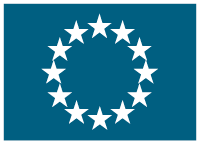Biodiversity Protection in Forest Areas, Including Nature 2000 Areas - Promotion of Best Practices
(BEST FOR BIODIVERSITY)
Start date: Jan 1, 2012,
End date: Dec 31, 2014
PROJECT
FINISHED
Background
Most forests in Poland are state-owned and play a key role in biodiversity protection. Appropriate conservation and management strategies are therefore required for forest areas that are included in the Natura 2000 network. Such strategies can help to ensure a long-term sustainable future for the valuable forest ecosystems.
Objectives
The general objective of the BEST FOR BIODIVERSITY project was to promote best practices related to biodiversity protection in state-owned forests, particularly within Natura 2000 sites.
The specific objectives of the projects were to:
Present methods of biodiversity protection and sustainable management to key stakeholders;
Create a platform of dialogue and co-operation among different parties focused on biodiversity issues;
Develop a road map for 11 chosen species or habitats, that could be applied as a regulation for all forest districts managed by the Directorate of the State Forests; and
Increase public awareness of both the richness of biodiversity of Polish forest areas and the importance of their protection. Results
The BEST FOR BIODIVERSITY project identified the best practices in biodiversity protection in forest areas, especially within Natura 2000 sites and presented methods of their protection and sustainable management to key stakeholders. It created 11 guidelines for the effective protection of each of the selected species (such as the European bison, forest hens, hare, partridge, reptiles, amphibians and the big predators, predatory birds, bats and insects) and two habitats (wetlands and xerothermic grasslands). The project demonstrated that there is a demand for educational and promotional activities related to nature conservation. There was a high degree of interest in the films, manuals and press articles produced as well as the high number of applications for training workshops and requests for continuation of the project activities. As a result, the Natura 2000 network and the selected species and habitats will be better protected in Poland.
The project produced all expected quantified results and in some cases exceeded expectations thanks to financial savings:
A total of 11 films were produced to present the best practices for protecting the selected species and habitats. These films attracted nearly 8 million TV viewers, while 44 films trailers were seen on TV by more than 12 million viewers. As planned, the beneficiary produced 22 000 DVD copies of the films, which they distributed among the stakeholders interested in the project. The films were presented at a number of film festivals and received the 1st prize in the film festival in Nowogard in 2014.
More training workshops were organised than expected (29 instead of the planned 22) and trained more people than foreseen (1 310 instead of 1 100). Additionally the project team organised six expert conferences to discuss the best way to protect the selected five species and one habitat (a total of 150 experts took part). A closing conference attracted around 200 attendees.
The best Polish experts were selected and working groups were set up to precisely identify and propose best practices, to prepare technical assumptions for future activities and to develop road maps for the protection of the selected species and habitats. A total of 16 roadmaps and 11 âGuidelines on best practices in protection of the selected species and habitatsâ, were produced. The guidelines were widely disseminated among stakeholders â i.e. schools, NGOs and libraries.
A media campaign was carried out, consisting of 55 articles on the conservation requirements of the selected species and habitats. The articles emphasised the benefit of the Natura 2000 network and how the LIFE programme made it possible through co-financing. The articles were available to more eight million newspaper readers. To conclude, the project increased Polish citizens' knowledge and understanding of the necessity for nature protection and the benefits of the Natura 2000 network. It demonstrated that widespread and well-coordinated educational activities can promote Natura 2000 areas and the need for their protection.
The After-LIFE plan foresees the continuation of the project website and the promotion of the project at conferences, seminars and workshops including the events organised by the LIFE National Focal Point and the workshops for the students of the Forestry Departments from Warszawa, Kraków and PoznaÅ. The beneficiary also plans to encourage broadcasters to continue to show the films that were produced by the project.
Further information on the project can be found in the project's layman report and After-LIFE Communication Plan (see "Read more" section).









